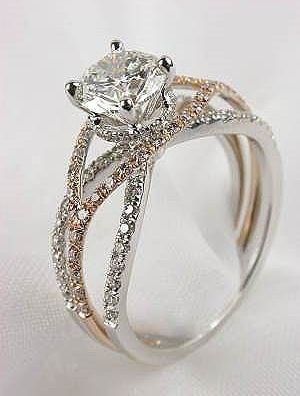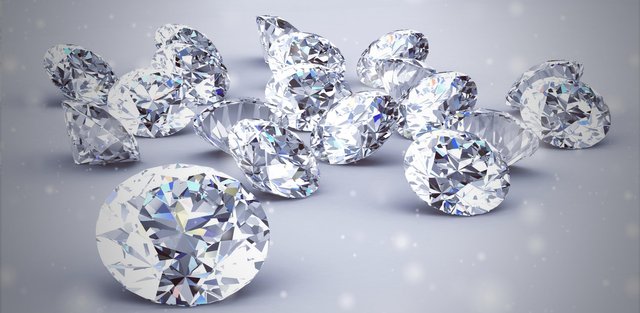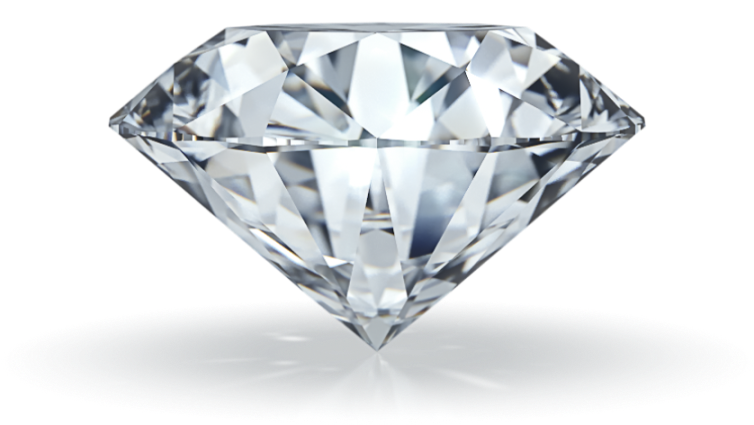Ultimate Guide to Buying Diamonds

Whether it is an engagement ring or a stunning necklace, no jewelry is complete without diamonds. They bring a certain class and look to the jewelry and the right diamond can make you stand out in a crowd. Each diamond is unique in its own right. But while buying diamonds for the first time, the jargons used by the salespeople can some times throw you off. There are four Cs you need to keep in mind while buying diamonds - color, cut, clarity and carat. These will tell you all you need to know about the quality of the diamond.

Color :
The color of the diamond determines its price and quality. A truly colorless diamond is very rare and of the highest price and quality. Most of the diamonds have slight yellow or brown tint. The color of the diamond is classified and can be determined as they are labeled with alphabets ranging from D to Z. The color grade is set by the Gemological Institute of America and is the standard by which diamonds are graded internationally. The grades D to F indicate the diamond is truly colorless and these are the most valuable. Grades G to J indicates the diamonds are nearly colorless. Grades K to M indicates the diamond is slightly tinted. Grades N to R indicates the diamond has a very light yellow color. Grades S to Z indicates light yellow or brown colored diamonds. Diamonds with grades from N to Z are some of the cheapest diamonds to buy. The color is determined by comparing the stones to master stones of color grades from D to Z.Cut:
The cut of the diamond is a term used interchangeably in two different contexts. First is the shape of the diamond and the most common ones are - princess, pear, round, marquise, oval, heart, radiant, cushion etc. But the cut that determines the price and quality of the diamond is the proportions of the sides of the diamond. A diamond gets its sparkle from the reflection of white light from the sides. There are a variety of factors that influence the cut. If the diamond is too shallow or too deep, the light escaped from the bottom or sides of the diamond. The perfect depth gives the right amount of sparkle. The cuts are classified as excellent, very good, good, fair and poor. An excellent cut will reflect the right amount of light. A well polished and well-cut diamond will display the perfect eight hearts and arrows while observed from bottom and top respectively. A well-cut and polished diamond will have the right contrast of bright and dark areas that are caused by the external and internal reflections of light.

Clarity:
Diamonds generally have two types of irregularities that affect its clarity - internal and surface. The internal ones are called inclusions and the surface ones are called blemishes. These form naturally or even while the diamonds are being mined. A diamond completely free from both is graded Completely Flawless (FL). These are extremely rare. Even experienced diamond traders may never see one of these in their lifetime. Then there are diamonds that are Internally Flawless (IF). These have some surface blemishes that can be removed by polishing further but they are devoid of any inclusions. The next is Very Very Slightly Included(VVS) diamonds. There are two categories in VVS - VVS1 and VVS2. These have inclusions which can only be observed by an expert under a 10x microscope. If the inclusions are detected while the diamond is being viewed from the bottom, then it is classified as VVS1 and if it is detected while being viewed from the top, then it is VVS2. The next classification is Very Slightly Included (VS). There are two further categories for this - VS1 and VS2. Then there are two categories of Slightly Included (SI1 and SI2), in which you can observe the flaws easily with a 10x microscope. Then there are Included diamonds with three categories - I1, I2, and I3 in which the flaws are visible to naked eye. It is not just the existence of inclusions but their positions also that influence the clarity of the diamonds.Carat:
Carat is perhaps the easiest of the 4 Cs to understand for a layman. It relates to the size of the diamond. One carat equals 0.2 grams and a carat is divided into 100 points. A single diamond that weighs 1 carat will cost more than a few small diamonds that together make up a carat as large diamonds are harder to come by.
Hope the above clarifies all the questions you have before buying diamonds. A truly flawless, colorless, well-cut and well polished large diamond will cost a fortune compared to smaller diamonds with minor flaws.